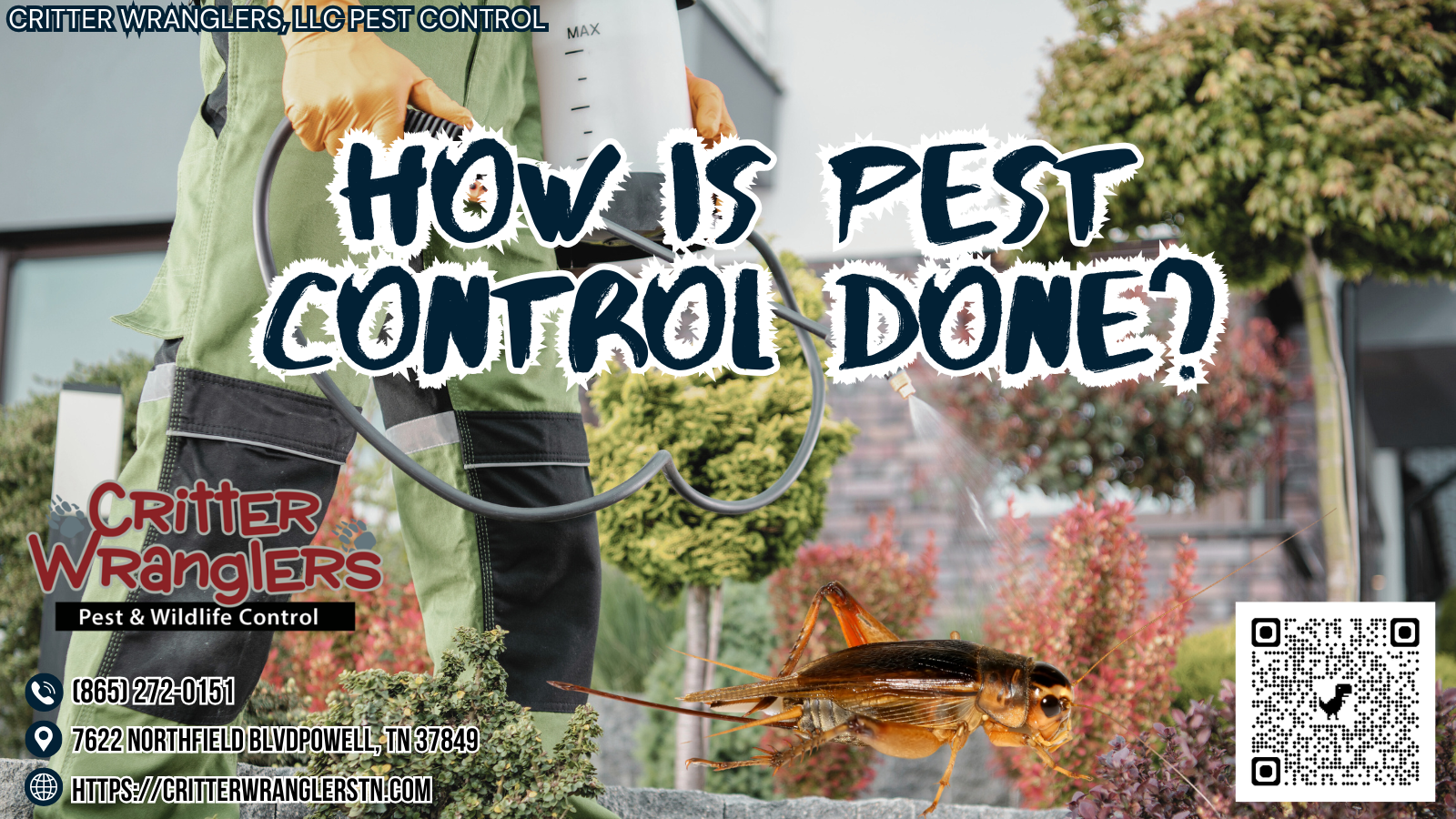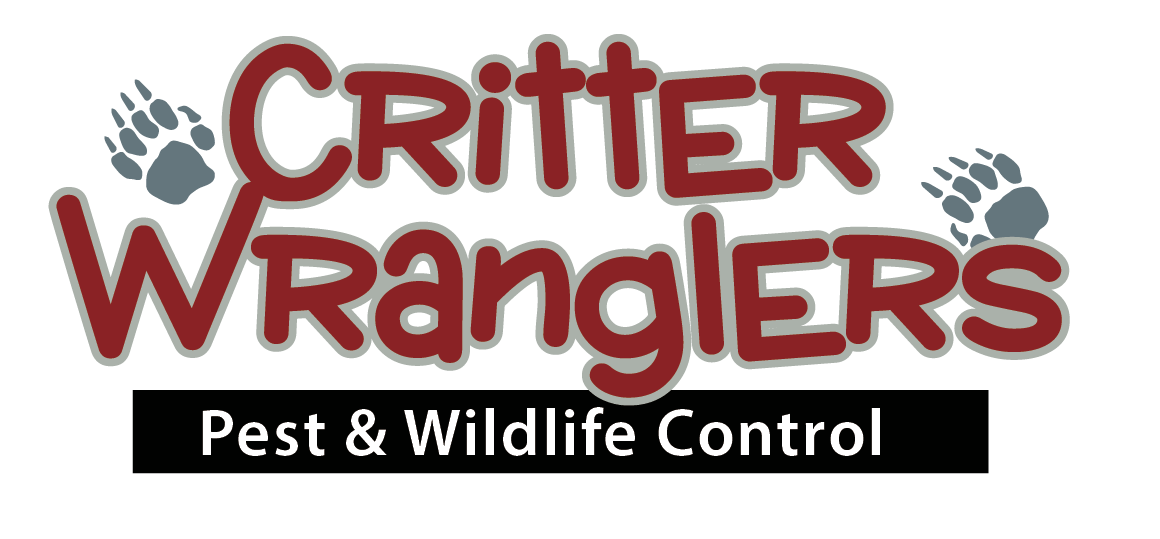Critter Wranglers, LLC Blog
Have an issue? Contact us today

How Is Pest Control Done?
Pest control is a systematic process aimed at managing pest populations safely and effectively. It begins with identifying the pest and understanding its behavior to develop prevention strategies. Common methods include chemical treatments with pesticides and biological control using natural predators. Integrated Pest Management (IPM) emphasizes long-term prevention through regular inspections and eco-friendly techniques. Non-chemical strategies involve sanitation, sealing entry points, and maintaining the landscape. If the infestations persist or are widespread, seeking professional help is advisable. Discovering more about specific methods can enhance your understanding of effective pest management.
Key Article Highlights
- Pest control involves a combination of prevention, monitoring, and treatment strategies to effectively manage pest populations.
- Integrated Pest Management (IPM) emphasizes eco-friendly approaches and long-term prevention rather than immediate eradication.
- Common methods include chemical treatments (organic and synthetic pesticides) and biological control using natural predators.
- Regular inspections help identify potential pest issues early, allowing for timely interventions and effective management.
- DIY methods, such as natural repellents and sealing entry points, can be effective for minor infestations but may require professional help for severe cases.
Understanding Pest Control
While many people may view pest control as merely a means to eliminate unwanted insects and rodents, it encompasses a broader understanding of managing pests in a safe and effective manner. Understanding pest behavior is vital in devising effective prevention strategies. By studying how pests interact with their environment, we can predict their movements and nesting habits. This knowledge allows us to implement measures that reduce the likelihood of infestations. Prevention strategies may include proper sanitation, sealing entry points, and maintaining a well-kept landscape. Effective pest control is not just about elimination; it is about creating an environment that discourages pests from becoming a problem in the first place. This proactive approach guarantees long-term success in pest management.
Common Pest Control Methods
Common pest control methods include chemical treatments and biological control techniques. Chemical treatments often use pesticides to eliminate pests quickly. In contrast, biological control techniques focus on using natural predators or pathogens to manage pest populations.
Chemical Treatments
Numerous pest control methods utilize chemical treatments to effectively manage and eliminate unwanted pests. These treatments often involve the use of pesticides, which are designed to target specific pests while minimizing harm to non-target species. It is vital to follow pesticide regulations, as these guidelines guarantee safe usage and help protect the environment. Proper application techniques minimize the risk of chemical residues remaining on treated surfaces, which can pose health risks to humans and pets. Regular monitoring and assessment of pest control effectiveness are essential to determine if chemical treatments are achieving desired results. By adhering to regulations and focusing on safety, pest control professionals can effectively manage pest problems while safeguarding public health.
Biological Control Techniques
Biological control techniques harness natural predators, parasites, or pathogens to manage pest populations effectively. These methods rely on the natural balance within ecosystems to reduce pest numbers without harmful chemicals. For example, introducing ladybugs can help control aphid populations, as they are natural predators of these pests. Another approach is habitat manipulation, which involves altering environments to favor beneficial organisms while discouraging pests. This can include planting specific crops or creating shelters for natural predators. By enhancing the presence of these beneficial species, pest control becomes more sustainable and environmentally friendly. Overall, biological control techniques offer a viable alternative to traditional methods, promoting long-term management of pest populations.
Integrated Pest Management
Integrated Pest Management (IPM) is a holistic approach to controlling pests that focuses on long-term prevention rather than immediate eradication. This strategy emphasizes pest monitoring and utilizes various methods to maintain ecosystem balance. By understanding the pest life cycle and environmental factors, IPM promotes sustainable practices that minimize chemical use.
| IPM Principles | Benefits |
|---|---|
| Prevention | Reduces pest outbreaks |
| Monitoring | Informs management decisions |
| Control Methods | Eco-friendly solutions |
| Education | Empowers communities |
| Evaluation | Improves effectiveness |
Implementing IPM fosters a healthier environment, protecting both human health and biodiversity. This method encourages cooperation between stakeholders, ensuring that pest control is both effective and sustainable.
Chemical Treatments Overview
Chemical treatments are a common method used in pest control. They involve various types of pesticides and specific application methods to effectively eliminate pests. It is also important to follow safety precautions to protect both people and the environment during these treatments.
Types of Chemical Pesticides
Effective pest control relies heavily on the judicious use of various pesticides, which serve as essential tools in managing unwanted insect populations. There are two primary types of chemical pesticides: organic pesticides and synthetic pesticides. Organic pesticides are derived from natural sources, such as plants or minerals, and are often considered safer for the environment and non-target species. They include substances like neem oil and diatomaceous earth. On the other hand, synthetic pesticides are man-made chemicals designed to target specific pests. These include popular options like glyphosate and pyrethroids. Each type has its advantages and disadvantages, affecting their effectiveness and environmental impact. Understanding these options is vital for making informed decisions in pest management strategies.
Application Methods Explained
The choice of pesticide types, whether organic or synthetic, greatly influences the methods used for application. Understanding these application methods is essential for effective pest control. Different pest control technologies focus on maximizing impact while minimizing harm to the environment.
- Spraying: This method involves distributing pesticides through a sprayer, allowing for even coverage on surfaces.
- Granular application: Granules are spread over targeted areas, ideal for outdoor use and soil treatments.
- Baiting: Pesticide baits attract pests, delivering chemicals directly to the target, often using eco friendly solutions.
Safety Precautions Required
Implementing safety precautions during pest control is essential to protect both human health and the environment. One key measure is the use of personal protective equipment (PPE). This includes gloves, masks, goggles, and protective clothing, which help prevent exposure to harmful chemicals. Before beginning any treatment, it is vital to read and follow label instructions carefully. Additionally, safe pesticide storage is important to avoid accidental spills or misuse. Store pesticides in a cool, dry place, away from children and pets. Proper disposal of leftover chemicals is also necessary to reduce environmental impact. By adhering to these safety precautions, pest control can be conducted effectively while minimizing risks to individuals and the surrounding ecosystem.
Non-Chemical Control Strategies
While many people associate pest control with chemical treatments, non-chemical control strategies offer effective alternatives for managing pest populations. These strategies focus on prevention and physical deterrents, minimizing the need for chemicals.
- Cultural Practices: Employing agricultural techniques such as crop rotation and proper sanitation can disrupt pest life cycles and reduce their numbers.
- Physical Barriers: Installing mesh screens, row covers, or traps can physically prevent pests from accessing plants or structures.
- Biological Control: Introducing natural predators or beneficial insects can help control pest populations without harmful chemicals.
Importance of Inspection
Effective pest management relies not only on prevention strategies but also on regular inspection. Inspections are vital for early detection of pest problems. By using pest identification techniques, professionals can recognize signs of pest activity before they escalate. This proactive approach helps in minimizing damage and reducing infestation risks.
Following inspection frequency guidelines guarantees that properties are checked consistently, allowing for timely interventions. Typically, inspections should occur seasonally or as needed, depending on the area’s pest history. Regular inspections also allow homeowners and businesses to maintain a pest-free environment. To summarize, a thorough inspection process is essential in effective pest control, as it aids in identifying potential issues and implementing appropriate management strategies.
DIY Pest Control Tips
Many homeowners seek to take control of pest issues by employing DIY pest control methods. These strategies can be effective and economical. Here are three tips to examine:
- Natural Repellents: Use essential oils like peppermint or tea tree oil, which deter pests without harmful chemicals.
- Trap Techniques: Create simple traps using household items. For example, a mixture of sugar and water can attract and trap ants.
- Seal Entry Points: Inspect your home for gaps and cracks. Sealing these openings can prevent pests from entering.
When to Hire Professionals
Homeowners often find success with DIY pest control methods, but there are times when professional help becomes necessary. If you notice persistent signs of infestation, such as droppings, nests, or unusual sounds, it is essential to act quickly. Proper pest identification can sometimes be challenging, and experts have the training and resources to accurately determine the type of pest and its extent. Additionally, if the infestation is widespread or poses health risks, professional intervention is the safest choice. Hiring professionals guarantees that effective and targeted methods are used, minimizing damage and restoring safety to your home. Ultimately, knowing when to seek help can save time, effort, and money in the long run.
Frequently Asked Questions
Are Pest Control Treatments Safe for Pets and Children?
Pest control treatments can be safe for pets and children if proper precautions are taken. Always discuss pest safety with your pest control professional, and guarantee pets and children are kept away during and after treatment.
How Long Does Pest Control Treatment Last?
Treatment duration varies based on pest type and method used; effectiveness timeline can range from weeks to months. Regular monitoring and maintenance guarantee lasting results, promoting a pest-free environment for homes and businesses alike.
Can Pests Develop Resistance to Treatments?
Yes, pests can develop resistance mechanisms to treatments over time. This adaptation can reduce treatment effectiveness, making it essential for pest control strategies to rotate methods and incorporate new approaches to combat resistance effectively.
What Should I Do After Pest Control Treatment?
After treatment, it’s essential to guarantee your home is a fortress against pests. Implement post treatment precautions, such as avoiding cleaned areas for a specified time, and schedule follow up inspections to assess effectiveness.
How Much Does Professional Pest Control Typically Cost?
Professional pest control costs vary widely, influenced by factors such as the type of service required, property size, and severity of infestation. Generally, services range from $100 to $500, depending on these cost factors.
